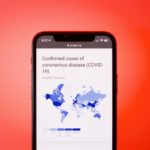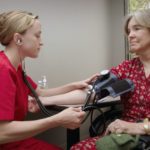
Currently, the major disease killing most Americans is Covid-19, but besides the current pandemic, which chronic diseases and major illnesses affect Americans the most?
According to the Centers for Disease Control and Prevention (CDC), nearly half of all Americans (around 45%) suffer from at least one chronic disease.
What is a chronic disease? And why do so many people in the US suffer from them?
A chronic disease is a physical or mental health condition that lasts for more than one year and causes issues with a person’s ability to function. A chronic disease also requires ongoing monitoring and treatment.
America has an aging population, meaning that more and more people are getting older, and they are also living longer. Along with this, there are existing risk factors that affect many Americans such as tobacco use, poor nutrition, excessive use of alcohol, and lack of exercise.
The combination of the aging population and risk factors increases the rate of chronic diseases.
Right now, 6 in 10 adults in the US have a chronic disease. 4 in 10 adults have two or more chronic diseases.
Ongoing treatment and care for chronic diseases are the main source of expenses within the healthcare sector in the US.
However, chronic diseases are not the only major illnesses and health problems in the US.

Major Health Problems
The top ten health problems in the US (both chronic diseases and others) are as follows: heart disease, cancer, stroke, respiratory disease, injuries, diabetes, Alzheimer’s disease, influenza and pneumonia, kidney disease, and septicemia.
These diseases and illnesses affect different demographics for different reasons.
Let’s go through each health problem and assess its cause and who it affects most.

Heart Disease
According to the CDC, heart disease is the leading cause of death among both men and women, and people of most racial and ethnic groups.
In terms of ethnicity, heart disease is the leading cause of death for African American, Native American, Hispanic, and white men.
The occurrence of heart disease is slightly higher in men than in women, across all racial and ethnic groups.
In terms of geographic region, it seems that heart disease occurs more often among adults over the age of 35 in the southern states of America.
Risk factors that contribute to the development of heart disease include high blood pressure, high blood cholesterol, and smoking cigarettes.
There are a few other contributing factors, such as other medical conditions and lifestyles. These include diabetes, being overweight or obese, unhealthy diet, lack of exercise, and excessive alcohol use.

Cancer
According to the CDC, cancer is the second leading cause of death among men and women across all ethnic and racial groups. One of every four deaths in the US is due to cancer.
While cancer impacts people of all ages, races, ethnicities, and sexes, it does not always affect them equally.
Differences among genetics, hormones, risk factors, environmental exposures, and other factors can lead to differences in risk among different groups of people.
However, for most cancers, increasing age is the most important factor.
Risk Factors
One of the risk factors includes alcohol intake. Drinking alcohol raises the risk of six kinds of cancer. These cancers include mouth and throat, voice box (larynx), esophagus, colon and rectum, liver, and breast (in women).
Another risk factor is tobacco use. Smoking cigarettes can cause cancer almost anywhere in your body. Tobacco smoke has at least 70 chemicals that cause cancer, also known as carcinogens. The cancers that smoking increases the chances of the most include oral cancer, esophagus cancer, lung cancer, bronchi and trachea cancer, mouth and throat cancer, and voice box (larynx) cancer.
A third risk factor is obesity. Being overweight, obese, and gaining weight are associated with at least 13 cancers.
A fourth risk factor is the human papillomavirus (HPV). HPV causes most cervical cancers, as well as cancers of the vagina, vulva, penis, anus, and cancers of the back of the throat.
The HPV vaccine protects against most strains of HPV that develop into cancer. However, only 60% of young adults in the US have received one dose of the vaccine, meaning most are not fully protected.
While screenings are advised for adults and at-risk people, cancer often goes undetected in the US. This is due to the healthcare system, and the for-profit private health insurance companies. Many people cannot afford to go to routine screenings, because they are too expensive, and they do not have health insurance. By avoiding these screenings, cancers go undetected.
Certain preventable and treatable cancers are not treated and worsen due to patients not being able to afford healthcare. Even when cancers are detected, some patients cannot afford treatment.

Stroke
Stroke is a leading cause of death, and a major cause of serious disability in US adults.
According to the CDC, around 795,000 people in the US have a stroke each year.
There are a number of different risk factors for stroke, but age may be one of the main factors. The older you are, the more likely you are to have a stroke.
Conditional Risk Factors
Another risk factor includes certain conditions. Conditions like high blood pressure and high cholesterol increase chances of stroke.
These are controllable and treatable conditions, but if they are left untreated, chances of stroke are high.
Heart disease can also increase chances of stroke.
Diabetes is another condition that increases the chance of stroke. While diabetes can be managed and controlled, if left uncontrolled, it can lead to strokes.
One last condition that increases chance of stroke is sickle cell disease. Sickle cell disease is a blood disorder that affects mainly black and Hispanic children.
Conditions are not the only risk factor that increases stroke.
Behavioral Risk Factors
Behaviors also affect the chances of stroke.
Unhealthy diet, high in fats, cholesterol, and salt increases the chance of stroke.
Physical inactivity can lead to other health conditions that can cause stroke.
Obesity, linked to both unhealthy diet and physical inactivity, increases chance of stroke.
Excessive alcohol use and tobacco use also increases the risk of stroke.
Lastly, family history and other characteristics can increase the risk of stroke.
Genetics and family history, such as sickle cell disease and common environments, can increase chance of stroke.
Age also plays a role. The older you are, the more likely you are to have a stroke. The chance of having a stroke about doubles every 10 years after age 55.
Sex also can be a key factor. Stroke is more common in women than men. Pregnancy and use of birth control pills pose special stroke risks for women.
Race and ethnicity also influence stroke risk. Black, Hispanic, Native American, and Alaska Native people may be more likely to have a stroke than non-Hispanic white or Asian people. The risk of having a first stroke is nearly twice as high for black people as for white people.

Diabetes
According to the CDC, more than 34 million people in the US have diabetes. 1 in 4 of them don’t know they have it.
More than 88 million US adults – 1 in 3 of every US adult – has prediabetes, and 90% of them don’t know they have it.
A person with prediabetes is at high risk of type 2 diabetes, heart disease, and stroke.
Risk factors for diabetes include prediabetes, overweight and lack of physical activity, and smoking.
Some groups of people are affected by prediabetes and diabetes more than other groups.
Differences in health status or access to healthcare among racial, ethnic, geographic, and socioeconomic groups are referred to as health disparities.
According to the CDC, of the US adults diagnosed with diabetes, 15% are Native American, 12.7% are Hispanic, and 12.1% are black.
12.6% of adults diagnosed with diabetes have less than a high school education. 7.2% of diagnosed adults have more than a high school education.
Why are these health problems so common?
Overall, common risk factors for these major diseases and illnesses include:
- High blood pressure
- High cholesterol
- Tobacco use
- Alcohol intake
- Obesity / overweight
- Physical inactivity
- Unhealthy diet
These common risk factors can become a problem among Americans due to the healthcare system, economic disparities, and lifestyle.
Since the healthcare system is expensive and inaccessible for many Americans, they cannot receive the care and treatment that they need in order to live a healthy life.
Due to not being able to see doctors regularly, many Americans develop these risk factors including unhealthy diet, physical inactivity, obesity, and alcohol and tobacco use.
These risk factors build and contribute to the prevalence of the chronic diseases and illnesses that kill many Americans today.







